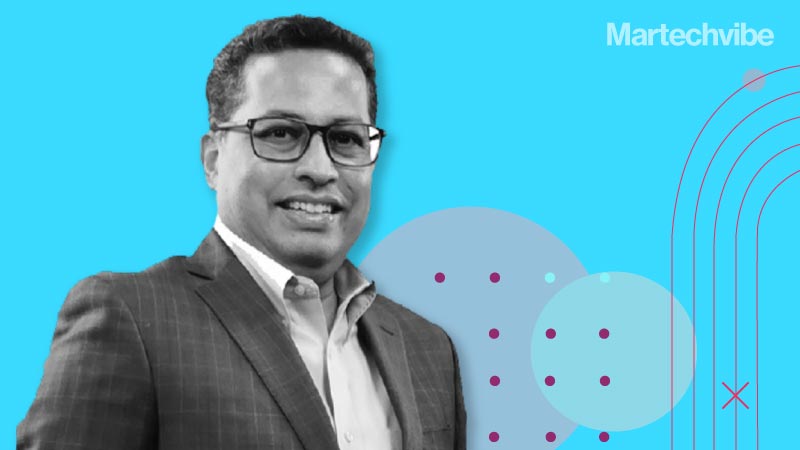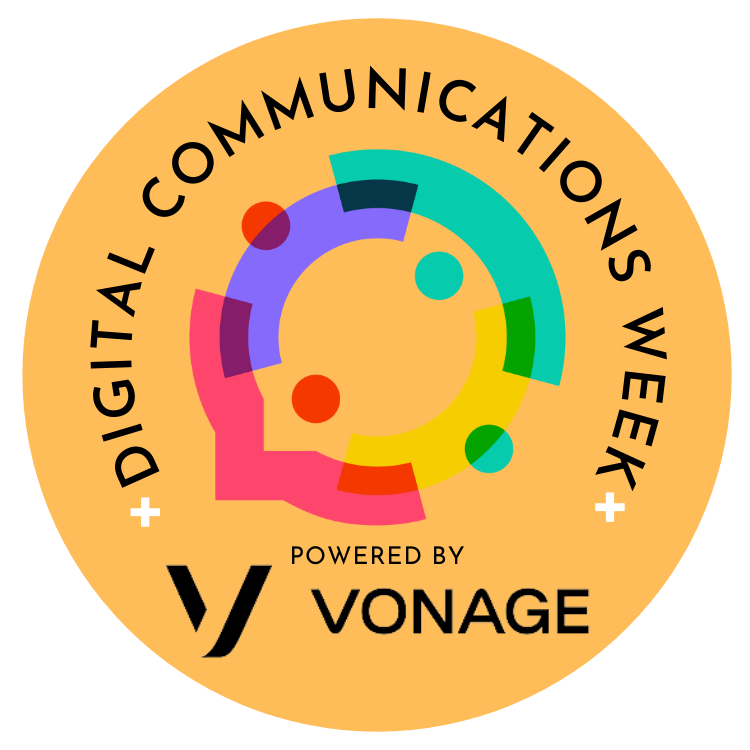AI Plays A Vital Role In Between Human And Bot
“What we are witnessing today is an intense competition between the disrupters that are innovating to capture the market share versus the existing enterprise trying to retain their market share,” says Sunny Rao, Senior Vice President of Global Sales Vonage. Vonage is a Cloud-based Enterprise Communication as a Service business (CaaS) company that began as […]
Topics

“What we are witnessing today is an intense competition between the disrupters that are innovating to capture the market share versus the existing enterprise trying to retain their market share,” says Sunny Rao, Senior Vice President of Global Sales Vonage.
Vonage is a Cloud-based Enterprise Communication as a Service business (CaaS) company that began as a VOIP business and has since expanded into communication APIs to help companies communicate better with their customers. Sunny brings over 20 years of experience as a global information technology leader and a deep understanding of expanding emerging technologies to APAC and MEA markets.
that began as a VOIP business and has since expanded into communication APIs to help companies communicate better with their customers. Sunny brings over 20 years of experience as a global information technology leader and a deep understanding of expanding emerging technologies to APAC and MEA markets.
In conversation with Ravi Raman, Publisher of Martech Vibe, Sunny speaks about the shifts in consumer dynamics and how companies evolve to have deeper conversations through seamless communication channels.
Excerpts from the interview.
How has the pandemic affected the way businesses communicate and collaborate?
The first thing that happened with most businesses was that they had to make decisions rather quickly. Everyone was equally unprepared due to what had happened. Companies that were primarily using brick and mortar models were hit hardest. Others were faced with difficulties when people started working remotely. How do you keep your employees collaborating when they are remote?
Companies that had already begun their journey towards digital transformation were more prepared to respond to the changes. They had built their capabilities in the cloud and were able to respond to the changing consumer behaviours. So much had changed. Customer buying behaviours, the way people interacted, the expectation to get things delivered. The good news was that digital was able to put services at the fingertips of customers. But this has put a lot of pressure on companies to figure out the way they need to service their customers and deal with all the logistics that happen behind the scenes to deliver to this new customer expectation.
It was quite a mix of different issues that came to the surface and exposed the chinks in the armour for business. They were not prepared enough in their transformation journey.
Is the market ready for a united Communications As A Service (CaaS) offering?
Companies that are moving along the line of cloud are a lot more prepared than anyone else. Can they be fully prepared? The answer is no. But what is important is the agility and the capability of how they react to changes. Companies that build monolithic software capabilities, even if they are on the cloud, will never be able to tailor products or keep up with changing processes quickly enough to meet the pandemic specific requirements. What the pandemic has shown us is that things opened up, and then they shut down all of a sudden. Travel opened up briefly and shut down again. Processes change, consumer dynamics change, and all these shifts and changes mean that all businesses have to transform and adapt very quickly.
If you build monolithic capabilities inside your software stack, you are going to be in trouble. This is precisely where many API business issues have surfaced recently. APIs have allowed clients to make changes on the fly and adapt to those changes. Businesses that we service have been able to know and reach out to consumers proactively rather than looking for customers. Rather than finding a way to bring their customers to the only channel that we offer service on. Organisations that used many of our API capabilities had agility built into their processes, they were able to turn around and be where their consumers are.
How are your solutions bringing engagement experiences to customers through channel initiatives?
When you look at any business, it has the regular customer journeys that users go through. Then, there are phases, companies will usually think about how to acquire consumers or customers, how to engage them, how to retain them and how to service them to cater to their demands. These are the broad categories.
Since we are a communications API company, we help during the customer acquisition process. Suppose you want to engage a customer who is located remotely and is not physically present in your store, you need to start with authentication and identification of who they are. We have a range of APIs that help our customers build that capability into their business processes. When I enter a website, how does the company know who I am? Is it a human or a bot attack? These are some of the capabilities that we bring with our APIs that connect presence which is your IP address online, your location, which is cell phone data and other telco characteristics such as what kind of customer am I, do I have a prepaid or postpaid plan, am I using a virtual or a real number, how long have I been using that number and so on. This kind of data is acquired for risk management purposes and is crucial for our customers involved in the microlending business, for example. Here, the payments are in quite a risky zone since there are no credit scores. Companies are providing customers with loans or offering a Buy Now Pay Later option, which is a rage at the moment. Our APIs bring in that risk minimisation capability to either approve or disapprove a transaction.
Now, let’s say you have made the acquisition well. You have to engage with the customers to serve them with the right set of information at the right time and in the right channel. When consumers are mainly working from home, they are using a completely different dynamic. They may have access to multiple devices, might switch to their home PC, etc. How do you maintain the continuum of the conversation they are having with the brand from either one of those devices? Our conversation API stitches together the same customer who may come at different points in the journey through various channels. Those channels are increasingly messaging channels or social channels, or voice channels. Our APIs get these channels under one umbrella and let clients move on to the support aspect.
For logistics clients, it’s about how they can give customers a great experience. Can they let the customer know that ‘We are delivering something to you tomorrow’? Customers are not going to call the contact centre to ask, ‘Where is my product?’ One of our customers — Aramex — does this beautifully. Customers get notified about when they are likely to receive their delivery, they can change the delivery time and reschedule. This saves the company a lot of time and money. In logistics, the last mile of delivery is the most expensive component and retry a burn on the business.
This is how companies can create bespoke experiences through the use of APIs in business. This is precisely what most companies are trying to do – create personalised, flexible and intelligent ways to serve their consumers.
Also Read: Leave Post Call Analysis To AI
What is the impact of AI on communications?
We do a lot of work using AI capabilities to tailor experiences within channels. We use AI in learning about patterns that we see in all of the traffic that we handle. If there is any preponderance of risk or fraudulent activity, if there is a particular time of the day when things happen a lot more compared to other times or days — it is all accessed by AI.
When the pandemic hit, we did a number of COVID notifications as well as information sharing using a chatbot that was built using our APIs as well as using our partner’s chatbot services. This is an area where AI came in. In several countries, we are using the same AI capabilities using voice. For example, in Australia, we are powering voice notifications for patients who’ve tested positive for COVID and are home quarantining to check up on how they are doing. There is not enough staff to do that job, so we use an AI system powered by our partner to have a conversation with these patients.
We also use AI for our video channels. AI brings in a lot of specific changes to make the video experience better. Take the example of telehealth, where we work with companies like Doctolib and Babylon where we need to facilitate integration with a lot of devices. For example, we may be trying to send the audio readings from a remotely placed stethoscope to a doctor who is also located remotely. There is a lot of work here to remove the background noise, provide background blurring capabilities and so on. There is a lot of machine learning that is happening behind the scenes.
AI plays a vital role in the handoff between a bot and a human. With our bots, there is a seamless transition of history and context to the human agent who takes over the case to continue exactly where the bot left off.
Also Read: Invest in the Right Communication API Tools
How do you empower brands to offer exceptional personalisation?
If I am a brand servicing customers across five countries, my business process, even for logistics and delivery, could be very different. In some countries, I prefer using a WhatsApp channel. In other cases, I may need to resort to voice because the customer is not reading the notifications, and it’s critical to escalate to a voice call.
Similarly, a customer may have reached out to a brand via their website to show them a problem they are facing. Maybe it is a repair in progress or an insurance company that needs to connect with a surveyor. The agent can escalate from a voice call to a video call so that the channel transition occurs without missing the context. This brings proactive experiences that transcend communication channels.
You are operating in a rapidly changing market. How do you continuously innovate and offer new services and products?
We have a diverse and geographically spread out workforce which is an important aspect, especially when we have travel restrictions. We are close to where our customers are. So, we can have our local conversations, understand the local cultural nuances and regulatory requirements and suggest solutions that can be implemented rapidly.
Secondly, we have domain knowledge that comes from a collection of industries around the world. Today, our teams in Dubai know everything that is happening in and around our customers in France or Indonesia or America or Brazil because we build that knowledge system inside the organisation to disseminate. Lastly, we have an excellent feedback mechanism that comes from our customers and developers who are using our APIs. We tap into both of them to help us shape our requirements and the deliveries from our product portfolio. Many of these developers, ecosystem partners as well as our customers provide feedback in our advisory council. Those were some of the ways we continually innovate and keep looking at the trends that the industry is headed towards.






